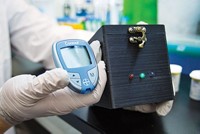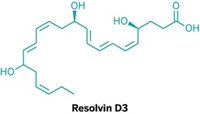Advertisement
Grab your lab coat. Let's get started
Welcome!
Welcome!
Create an account below to get 6 C&EN articles per month, receive newsletters and more - all free.
It seems this is your first time logging in online. Please enter the following information to continue.
As an ACS member you automatically get access to this site. All we need is few more details to create your reading experience.
Not you? Sign in with a different account.
Not you? Sign in with a different account.
ERROR 1
ERROR 1
ERROR 2
ERROR 2
ERROR 2
ERROR 2
ERROR 2
Password and Confirm password must match.
If you have an ACS member number, please enter it here so we can link this account to your membership. (optional)
ERROR 2
ACS values your privacy. By submitting your information, you are gaining access to C&EN and subscribing to our weekly newsletter. We use the information you provide to make your reading experience better, and we will never sell your data to third party members.
Biological Chemistry
Sensing fungus among us for less than a penny
Yeast-based biosensors could also be extended to sense viruses and bacteria
by Stu Borman
July 3, 2017
| A version of this story appeared in
Volume 95, Issue 27

Inexpensive biosensors made from engineered yeast can detect 10 different fungi, including human pathogens, and can potentially identify other fungi, bacteria, and viruses. The biosensors could be put to work monitoring microorganisms that cause health problems, damage crops, or cause food to spoil (Sci. Adv. 2017, DOI: 10.1126/sciadv.1603221). Virginia W. Cornish, Nili Ostrov, Miguel Jimenez, and Sonja Billerbeck of Columbia University and coworkers, who developed and tested the biosensors, point out that current fungal tests, such as antibody and nucleic acid assays, often require specialized labs, refrigerated reagents, expensive instruments, and highly trained personnel. The new biosensor tests could cost less than a penny when mass-produced, the researchers estimate. The devices are dry, do not require refrigeration, and can be used by anyone. To create the biosensors, the researchers removed the surface receptor protein that yeast use to detect pheromones from mating partners and replaced it with receptors responsive to pheromones from other fungi, such as candida, which causes human yeast infections. They engineered the yeast so activation of the receptor turns on a biosynthetic pathway for lycopene, the compound that makes tomatoes red. In the presence of candida pheromone, the yeast turns red, a visual signal of the fungus.





Join the conversation
Contact the reporter
Submit a Letter to the Editor for publication
Engage with us on Twitter